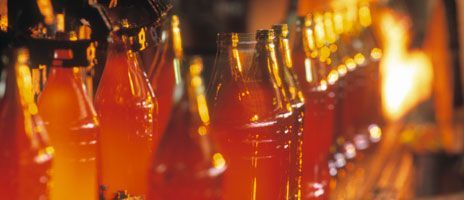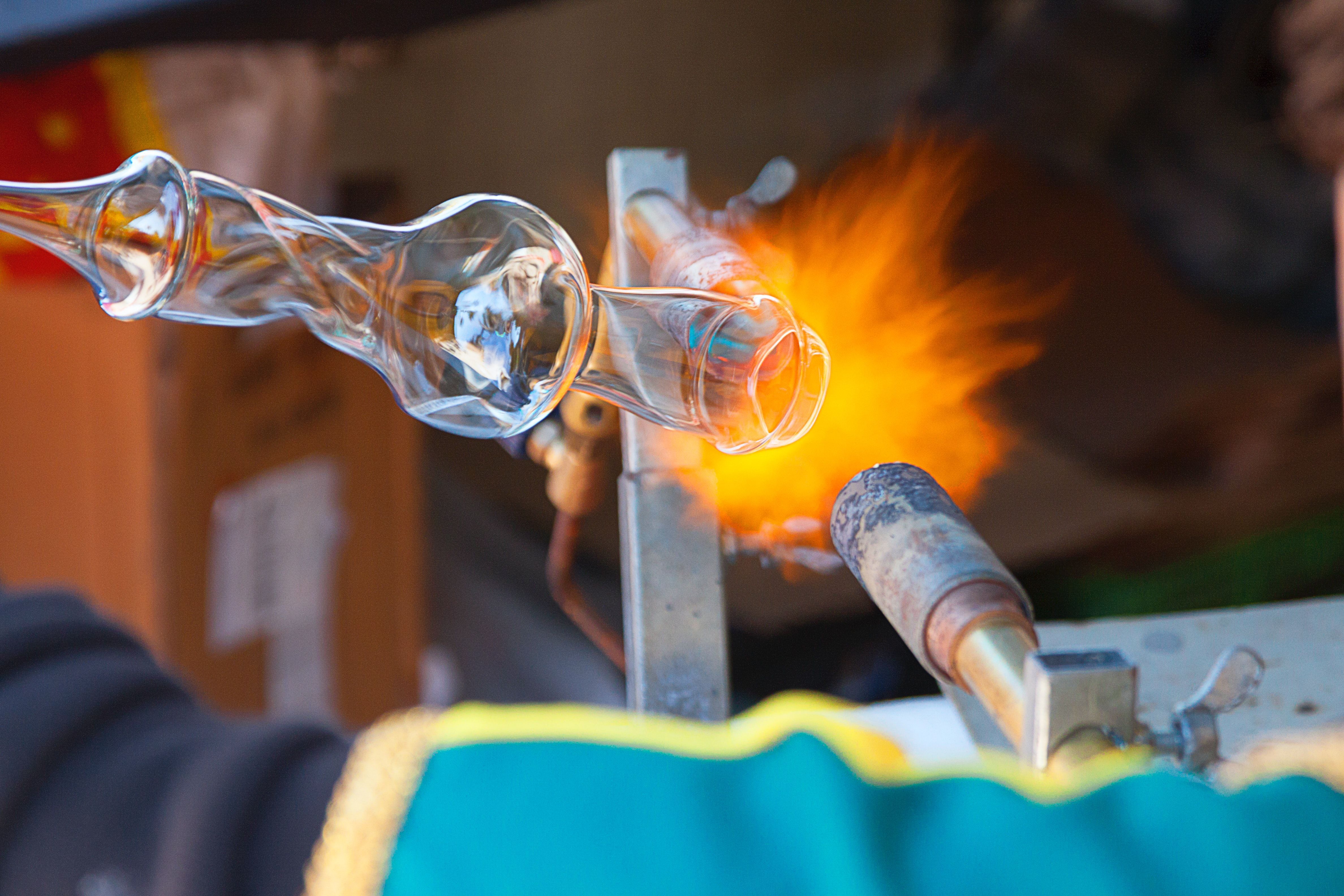Glass Jars and Bottles: How Are They Made?


Now that we have learned a little bit of the history of glass manufacturing, let's take a look into how glass jars and bottles are made today. But before we dive too deeply into the process, we need to learn a bit of glass terminology. Here are some commonly used words in the glass jar and container production business:
Glass Manufacturing Terminology
First up in Glass Vocabulary 101 is gob. No, not ‘gob’ like an Everlasting Gobstopper. This kind of gob has little to do with Willy Wonka and his chocolate factory. A gob in glass making refers to a cylinder of melted glass. When the glass gets to the correct temperature, a shearing blade is used to cut off and shape the glass into a gob. Think of it as a blob of glass (and perhaps the mash up of those two words created the word gob!).
The next new word we are going to learn is parison. Don't confuse this with Parisian, or parson, or person, or even a Parisian parson person. A parison is a partially formed piece of molten glass. It is the halfway point between a gob and a finished glass jar or bottle.

Press and Blow for Glass Jars and Bottles
You've learned enough at this point, so we will continue on to the actual methods. There are two main techniques for automatic glass jar manufacturing. First is the press and blow process. A gob (remember: blob of glass) is dropped into a blank mold, and a plunger presses a dent into the gob. This creates the parison. The parison is then flipped over and placed into the blow mold. It is then blown with air, and it takes on the shape of the mold. This method of manufacturing glass jars and bottles is typically used for wide-mouthed containers.
Blow and Blow for Glass Jars and Bottles
For narrow neck glass jars and bottles, the blow and blow technique is preferred. In this method, a gob is first pressed into the blank mold using compressed air. This forms the neck, or finish, of the bottle. A second blast of air is blown through the newly formed neck, thus beginning to form the bottle. The thick-walled parison is flipped over and transferred to the blow mold. At this point, the process is the same as with the press and blow: the bottle is formed against the sides of the blow mold using air.
After the glass jars and bottles are formed using one of these two techniques, they must be cooled correctly in order to prevent cracks, chips, or breaks. They are moved to an annealing oven, which reheats and cools the glass evenly to strengthen them. Glass that isn't annealed may shatter or crack with small temperature changes or mechanical shocks. After the containers are correctly cooled, they are examined for imperfections. If they pass inspection, then the glass jars and bottles are ready for the consumer. Then they are packaged up and ready to be shipped to you!
PSST.. Want to see a real glass jar in the wild? We have a bunch… Check them out here.